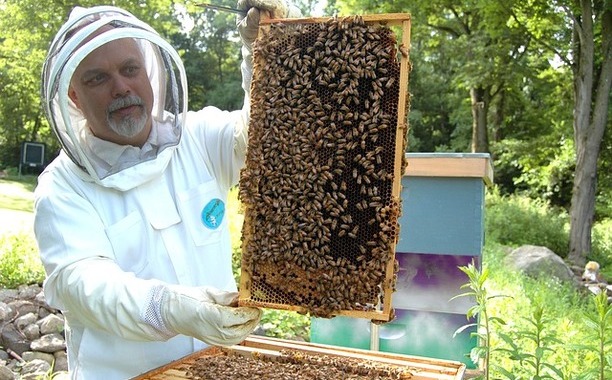Over the course of just 12 months, more than forty percent of the honey bee colonies in the United States died, according to a recently released survey conducted by the U.S. Department of Agriculture (USDA).
According to The Wall Street Journal, beekeepers have started to lose a huge number of bees during both the summer as well as the winter months — sparking scientific inquiries, as the deaths usually occur during the cold winter months.
Beekeeping in the U.S. plays an important role in the agricultural industry, as the bees account for the pollination of more than $15 billion worth of crops on an annual basis.
The high death rate amongst bees has begun to worry professional beekeepers who struggle to keep up with the annual expenditures associated with the replenishment of their bee colonies.
Dr. Dennis vanEngelsdorp, project director for the Bee Informed Partnership survey and assistant professor of entomology at the University of Maryland, was quoted by UMD as having said, “We traditionally thought of winter losses as a more important indicator of health, because surviving the cold winter months is a crucial test for any bee colony”.
We traditionally thought of winter losses as a more important indicator of health, because surviving the cold winter months is a crucial test for any bee colony (…) But we now know that summer loss rates are significant too. This is especially so for commercial beekeepers, who are now losing more colonies in the summertime compared to the winter. Years ago, this was unheard of.
According to Jeff Pettis, an entomologist at the Agriculture Department’s bee research lab, “If beekeepers are going to meet the growing demands of pollinating services, something needs to be done” and the researchers really “need to find better answers to the host of stresses that lead to both winter and summer colony losses.”
According to the survey, which featured 6,000 beekeepers from across 50 states and covered a 12-month span which ended in April of 2015, beekeepers lost 42 percent of their honey bee colonies, up from 34 percent from previous year.
Although the cause of their deaths is presently unknown, scientists often blame a combination of factors which include poor diets as well as stress associated with frequent moves. Many of them say that the Varroa mite, a blood-sucking parasite, is a common malefactor in their demise.
Last month, researchers from Newcastle University warned that bees are addicted to neonicotinoid or “neonics” — a substance used in pesticides which may be a contributing factor to their deaths.
However, Croplife America, a trade organization representing pesticide companies, has indicated that no existing evidence which links neonicotinoids to an increased rate of honey bee deaths, CBS News reported.
What do you think is killing the honey bees?
























